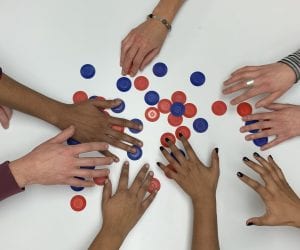Already we are two months into the International Year of Soils, a global campaign highlighting the fragility of universal food security and overall environmental health straight from the source – soil. Seeing the need for increased attention and advocacy of healthy soils, the United Nations launched the inaugural World Soil Day on December 5, 2014. Since December, efforts have been made to educate governments and the general public on actions that must be taken to protect this vital non-renewable resource.
It’s remarkable just how much we demand from our soils beyond providing the foundation for food production. Soils also house rich biodiversity, aid in the planet’s adjustment to climate change, and are a major water filtration source. Having strong and healthy soils means a better quality of life for all, but each year we demand even more without ensuring proper land management for a sustainable future. In the U.S. alone soil is now eroding at 10 times the rate at which it forms, in other countries that rate is as high as 40 times faster than replenishment. This should be a major concern for a human population that is expected to add another two billion people by 2050.
Classroom Connections – Teaching about Soil
Soil can be both a timely and fun topic for your students to explore. Drawing on their learning in both science and social studies, our lesson Crowding Can Be Seedy has students observe population density and its impact on limited resources, such as soil. As an extended lab experiment students will actually interact with soil as they try and grow as many plants as possible in a confined space. The lab has students collect and analyze data on the overall health of the plants, simulating the work being done by groups currently concerned with soil health, like the United Nations Food and Agriculture Organization.
Another access point for exploring soils, and more specifically arable land, is with our activity Earth: The Apple of Our Eye. In this simulation students will discover just how small the percentage of arable land is that makes up the Earth’s surface. As students gain an understanding of the causes to soil degradation they can then explore ways in which soil is being preserved and protected. Both lessons are a great way to bring the International Year of Soils into the classroom.
Additional Resources on Soil
For more classroom connections to the International Year of Soil be sure to check out our Twitter account (@PopulationEd) and search for the hashtag #IYS2015. We have also collected a number of resources on our World of 7 Billion website as one of this past year’s global challenges focused on suitable farmland.



